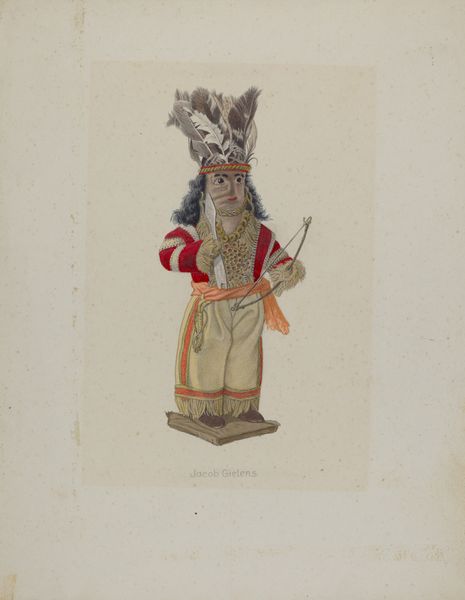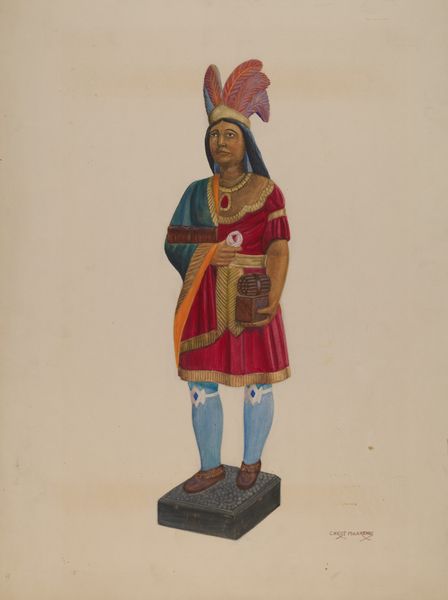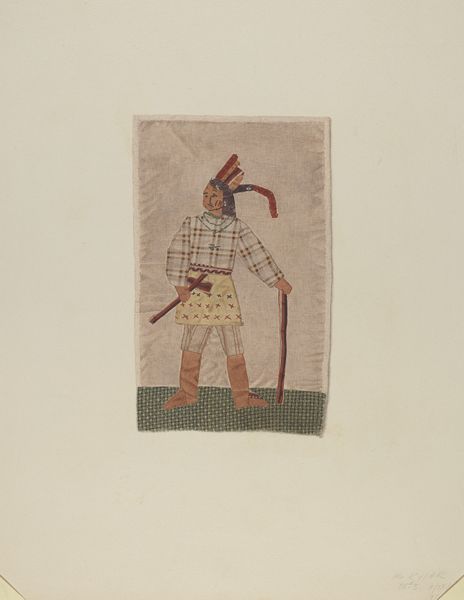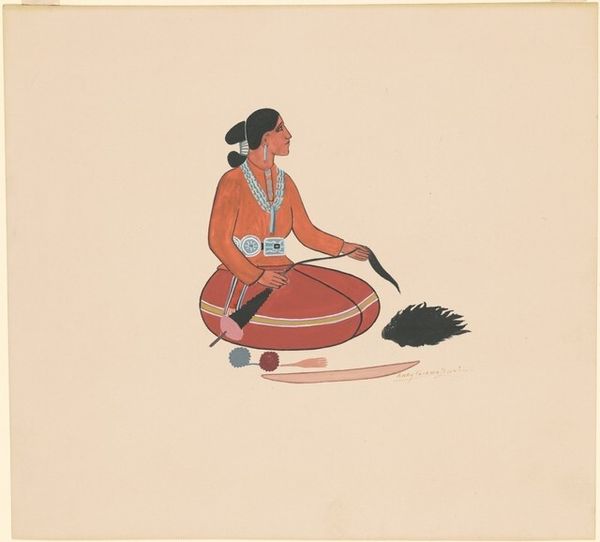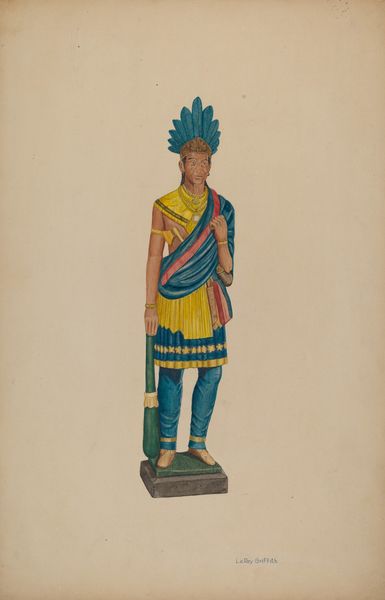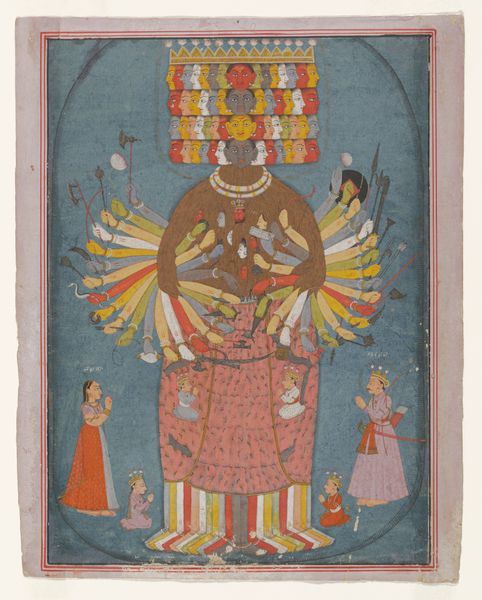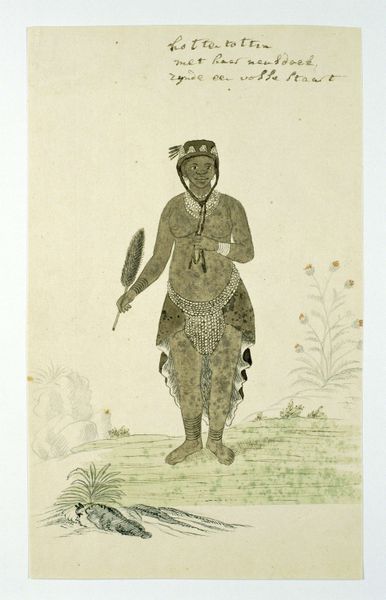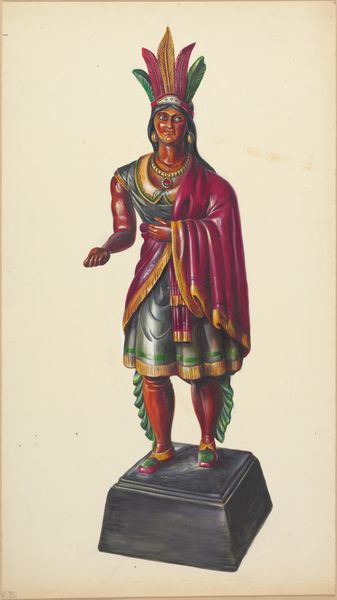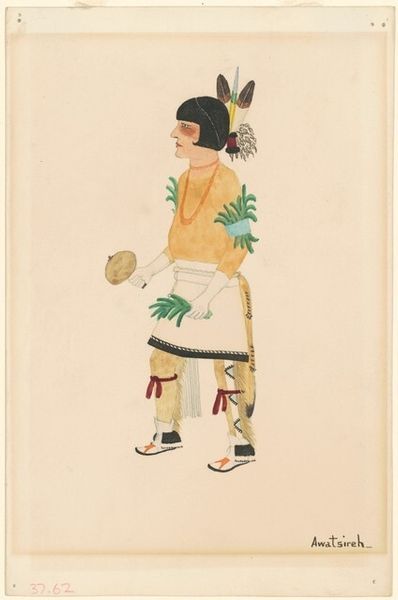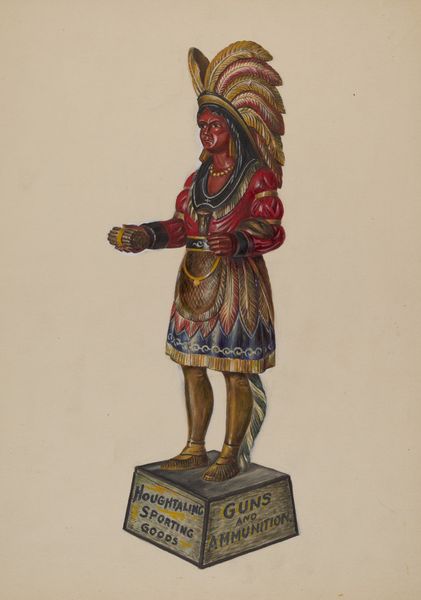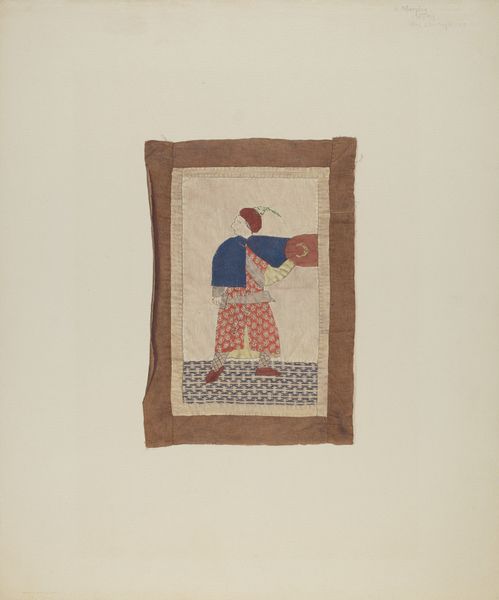
painting
#
portrait
#
painting
#
figuration
#
indigenous-americas
Dimensions: image (irregular): 15.88 × 6.67 cm (6 1/4 × 2 5/8 in.) sheet: 29.21 × 20.32 cm (11 1/2 × 8 in.)
Copyright: National Gallery of Art: CC0 1.0
Editor: This is Fred Kabotie's "Hopi Snake Priest," dating to around 1920. It's a drawing that depicts exactly what the title suggests. I find it kind of serene, which is surprising, considering the snakes! What strikes you when you look at this? Curator: Serene, you say? I love that. I find myself wondering about the artist’s hand as it moved, almost reverently, across the page. Look at the man's gaze—the mask both conceals and reveals. It asks us, "What do *you* see when you look at *me*?" And the snakes, writhing and alive, aren't merely props; they’re conduits. Do you sense the sacredness of this moment, or is it lost on modern eyes like ours? Editor: I see what you mean about the sacredness. It feels like we’re peering into something ancient and very powerful. How does Kabotie manage to make it feel both immediate and timeless? Curator: Ah, there’s the rub! His use of line, so clean and assured, coupled with the earth-toned palette... it's as if he’s channeling a visual language that predates spoken words. Do you notice how the figure isn't placed *on* the background, but *within* it? Editor: Yes! He and the background almost seem like they're one thing, not separate. Curator: Exactly. Perhaps it suggests how deeply entwined the Hopi people are with their land. And those snakes... a symbol of transformation and healing. Editor: It makes you think about the stories behind the image, all the cultural significance packed into it. I had just thought of it as a static picture! Curator: Yes, precisely. I think we see so much more in this simple composition now. A bit of soul peeking through, right?
Comments
No comments
Be the first to comment and join the conversation on the ultimate creative platform.
